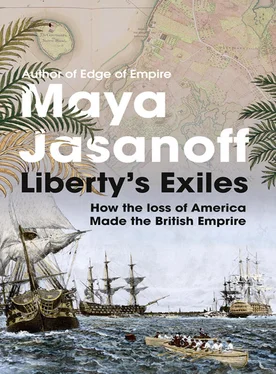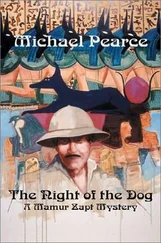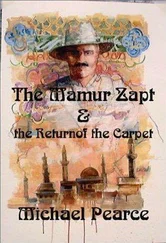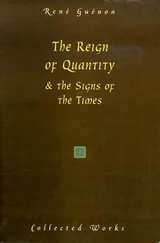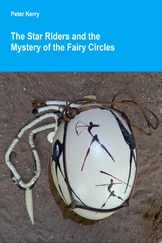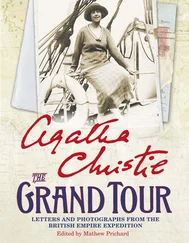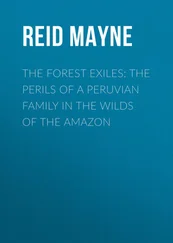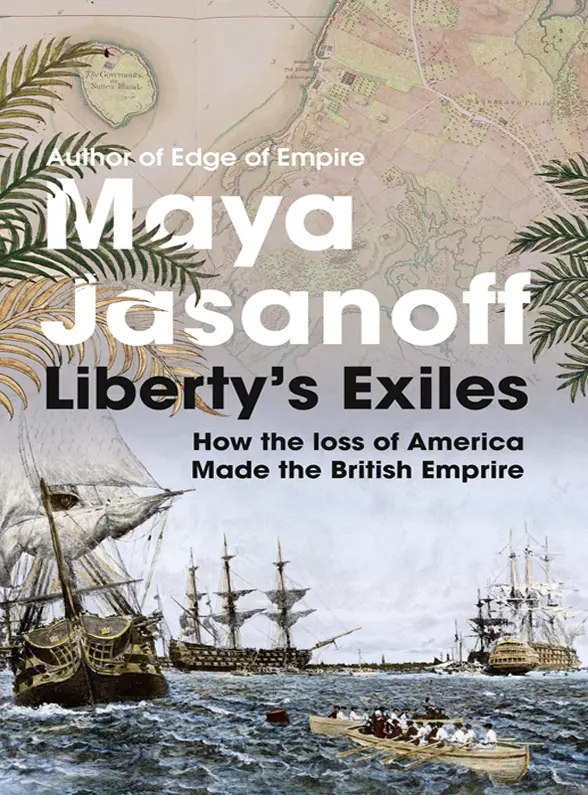
MAYA JASANOFF
Liberty’s Exiles
The Loss of America and the Remaking of the British Empire

Dedication
In memory of Kamala Sen (1914–2005) and
Edith Jasanoff (1913–2007),
emigrants and storytellers
Contents
Cover
Title Page MAYA JASANOFF Liberty’s Exiles The Loss of America and the Remaking of the British Empire
Dedication Dedication In memory of Kamala Sen (1914–2005) and Edith Jasanoff (1913–2007), emigrants and storytellers
List of Maps List of Maps The Loyalist Diaspora The Loyalists’ North America The Thirteen Colonies in 1776 The Battle of Yorktown The Southern Colonies During the War North America After the Peace of Paris The British Isles The Maritimes After the Loyalist Influx Port Roseway, Nova Scotia Loyalist Settlements on the Saint John River The Bahamas and the Coast of East Florida Jamaica Freetown and the Mouth of the Sierra Leone River North America in the War of 1812 Northern India
Cast of Characters
Introduction: The Spirit of 1783
PART I: REFUGEES
Chapter One - Civil War
Chapter Two - An Unsettling Peace
Chapter Three - A New World Disorder
PART II: SETTLERS
Chapter Four - The Heart of Empire
Chapter Five - A World in the Wilderness
Chapter Six - Loyal Americas
PART III: SUBJECTS
Chapter Seven - Islands in a Storm
Chapter Eight - False Refuge
Chapter Nine - Promised Land
Chapter Ten - Empires of Liberty
Conclusion: Losers and Founders
Picture Section
Appendix: Measuring the Exodus
Bibliography
Index
Acknowledgments
A Note About the Author
A Note on the Type
Also by Maya Jasanoff
Illustrations Credits
Copyright
About the Publisher
Notes
List of Maps
The Loyalist Diaspora
The Loyalists’ North America
The Thirteen Colonies in 1776
The Battle of Yorktown
The Southern Colonies During the War
North America After the Peace of Paris
The British Isles
The Maritimes After the Loyalist Influx
Port Roseway, Nova Scotia
Loyalist Settlements on the Saint John River
The Bahamas and the Coast of East Florida
Jamaica
Freetown and the Mouth of the Sierra Leone River
North America in the War of 1812
Northern India
Cast of Characters
(in order of appearance)
BEVERLEY ROBINSON AND FAMILY
A native Virginian, Beverley Robinson (1722–1792) moved to New York and married the wealthy heiress Susanna Philipse in 1748. He raised the Loyal American Regiment in 1777. After the evacuation of New York, Robinson settled in England, where he died in 1792. His widow and two daughters, Susan and Joanna, remained in England until their deaths. His five sons enjoyed profitable careers in different parts of the British Empire. The eldest, beverley robinson jr. (1754–1816), lieutenant colonel of the Loyal American Regiment, settled outside Fredericton in 1787 and became a member of the New Brunswick provincial elite. frederick philipse “phil” robinson (1763–1852) was a career soldier who attained considerable prominence as a general in the Peninsular War and War of 1812, for which services he earned a knighthood. At the time of his death, General Robinson was the “grandfather” of the British army, the longest-serving officer on its books. The youngest son, WILLIAM HENRY ROBINSON (1765–1836), distinguished himself in the British army’s commissariat department, for which he also received a knighthood. He married Catherine Skinner, daughter of loyalist general Cortlandt Skinner, and sister of Maria Skinner Nugent.
JOSEPH BRANT (THAYENDANEGEA) (1743–1807)
As a teenager in colonial New York, the Mohawk Indian Joseph Brant—or Thayendanegea in Mohawk—fell under the patronage of British superintendent of Indian affairs Sir William Johnson, who had married Brant’s elder sister molly (ca. 1736–1796). Brant was educated at Wheelock’s Indian school in Connecticut, and fought for the British in both the Seven Years’ War and Pontiac’s War. During the American Revolution, Joseph and Molly Brant helped recruit Iroquois to the British cause. In 1783 Brant initiated the resettlement of dislocated Mohawks in Canada. From his new home on the Grand River (today’s Brantford, Ontario), Brant tried to reunite Iroquois nations divided by the Canadian-U.S. border, and to establish a new Indian confederacy reaching to the west. He visited Britain twice, in 1775 and 1785, to advance Mohawk land claims; but as the 1790s wore on he found himself increasingly at odds with British colonial officials and saw his hopes for a western confederacy dashed. He died in 1807 and is buried next to the Mohawk Chapel in Brantford.
ELIZABETH LICHTENSTEIN JOHNSTON (1764–1848)
Elizabeth Johnston spent almost half her life on the move. An only child, she lost her mother at the age of ten and spent the early years of the revolution in seclusion while her father, John Lichtenstein, fought in a loyalist regiment. In 1779, she married william martin johnston (1754–1807), a loyalist army captain, medical student, and son of prominent Georgia loyalist Dr. Lewis Johnston. Johnston evacuated with the British from Savannah, Charleston, and East Florida, settling in 1784 in Edinburgh. In 1786 the Johnstons moved to Jamaica, where William worked as a doctor. The years in Jamaica were trying ones for Johnston; she went back to Edinburgh from 1796 to 1802, and in 1806 relocated to Nova Scotia (returning to Jamaica from 1807 to 1810 to wrap up business following William’s death in 1807). She spent her last four decades far more rooted than her first, surrounded by her adult children and her father, who died in Annapolis Royal in 1813. Six of Johnston’s ten children predeceased her, including her eldest son Andrew, of yellow fever in Jamaica in 1805, and her eldest daughter Catherine, in a Boston madhouse in 1819.
DAVID GEORGE (ca. 1743–1810)
David George was born a slave in Virginia. He ran away from his master in 1762, eventually ending up in the custody of Indian trader George Galphin at Silver Bluff, South Carolina. There, partly under the influence of George Liele, George converted to the Baptist faith and became an elder of the Silver Bluff Baptist Church. In 1778, George followed British forces to Savannah, where he worked as a butcher and continued to preach with Liele. With the British evacuations, George and his family traveled to Nova Scotia as free black loyalists. There George became an active evangelist, establishing a church at Shelburne and preaching to white and black audiences around the Maritimes. In 1791 George emerged as a leading supporter of the Sierra Leone Company’s project to relocate black loyalists to Africa, and helped John Clarkson recruit colonists for the scheme. He was among the founding settlers of Freetown in 1792. George visited England in 1792–93, but otherwise spent the rest of his life in Sierra Leone, where he set up another Baptist church (the first in Africa) and died in 1810.
JOHN MURRAY, FOURTH EARL OF DUNMORE (1732–1809)
Dunmore was a Scottish peer whose father supported the Young Pretender in 1745. Despite their Jacobite sympathies, the family retained their title, and Dunmore served for nearly thirty years as a representative peer for Scotland in the House of Lords. He went to North America in 1770 as governor of New York, and became governor of Virginia in 1771. He achieved considerable notoriety for his proclamation of 1775, which granted freedom to patriot-owned slaves who joined British military service. Dunmore became a notable advocate of loyalist interests, promoting numerous schemes to continue the war (including those of John Cruden), and championing loyalist efforts to win financial compensation. He was appointed governor of the Bahamas in 1786, in which capacity he supported William Augustus Bowles’s bids to establish the state of Muskogee. Dunmore was recalled from the governorship in 1796 and remained in Britain until his death.
Читать дальше
